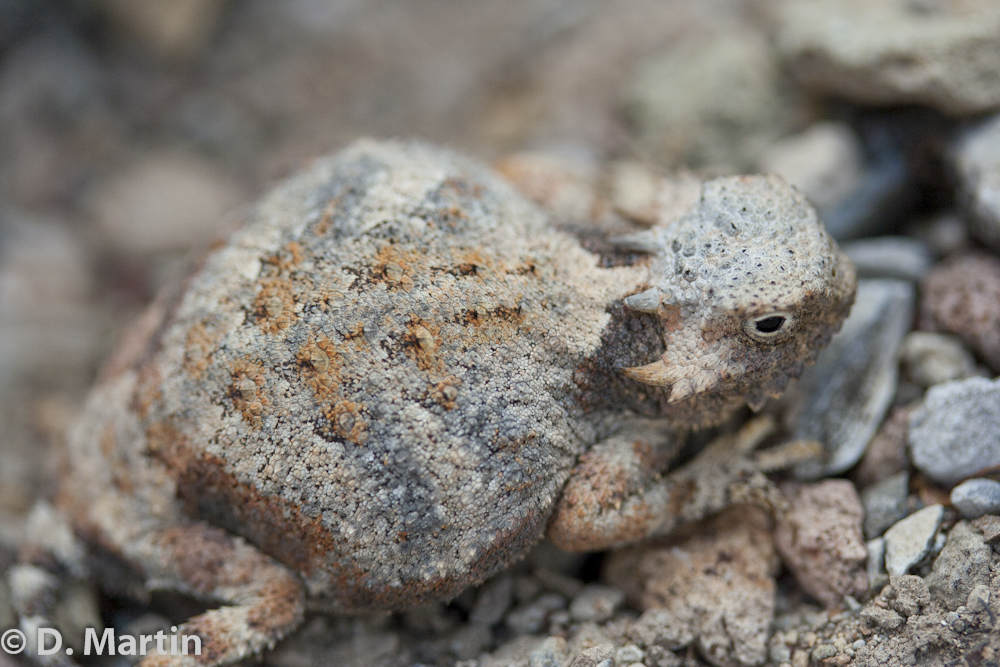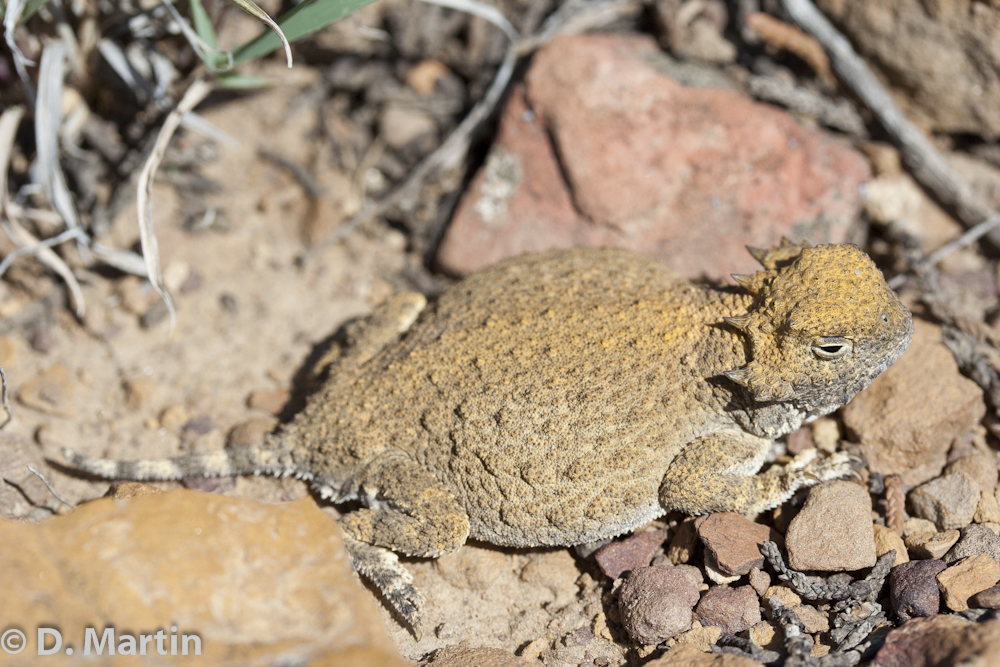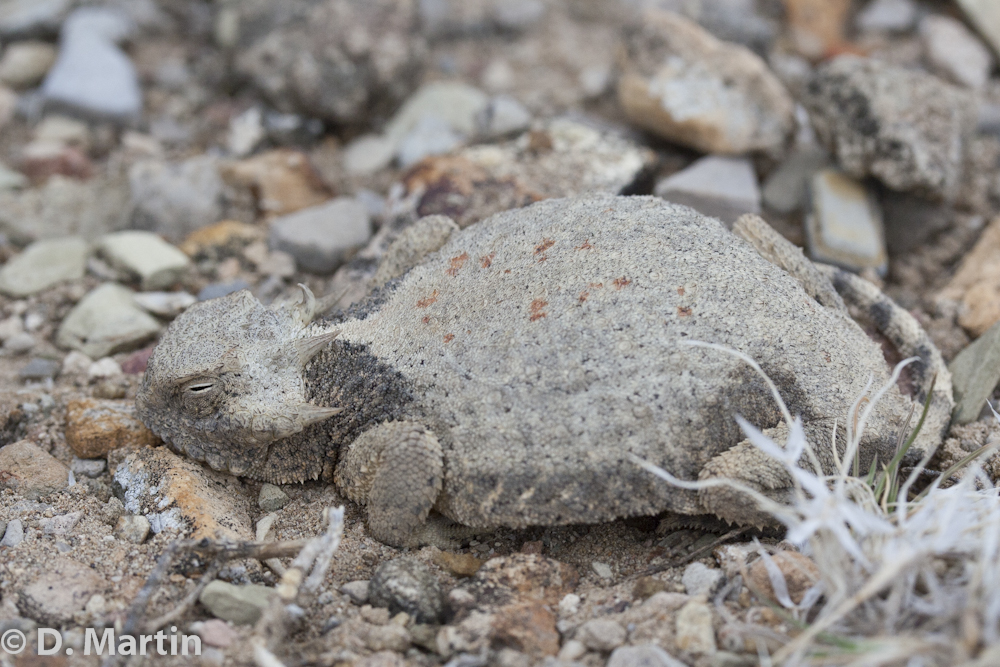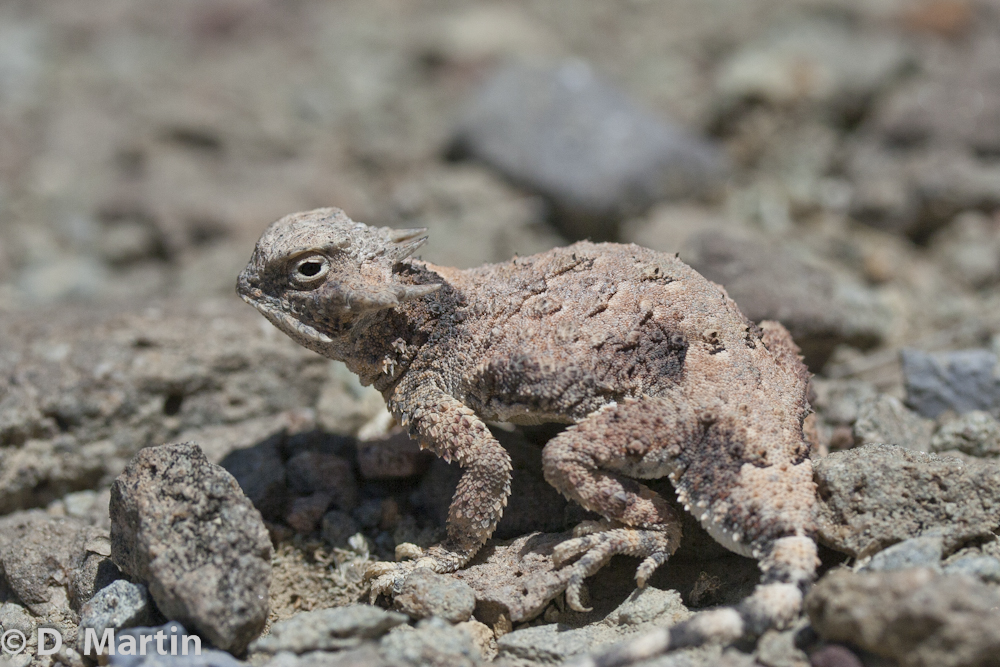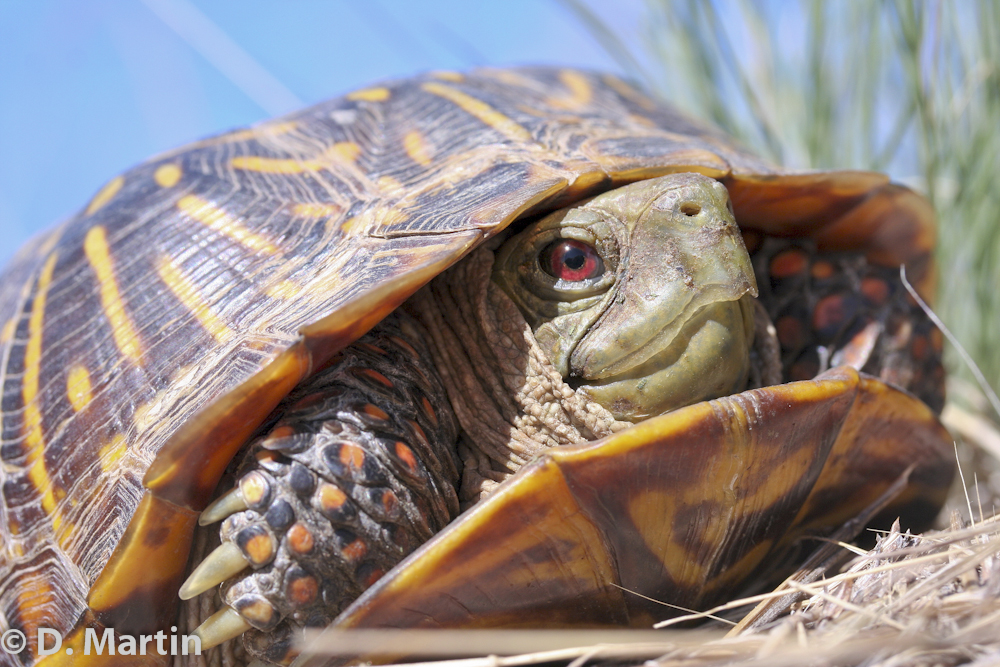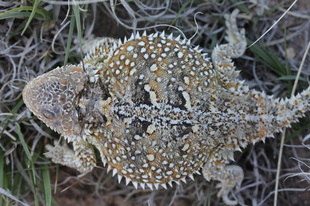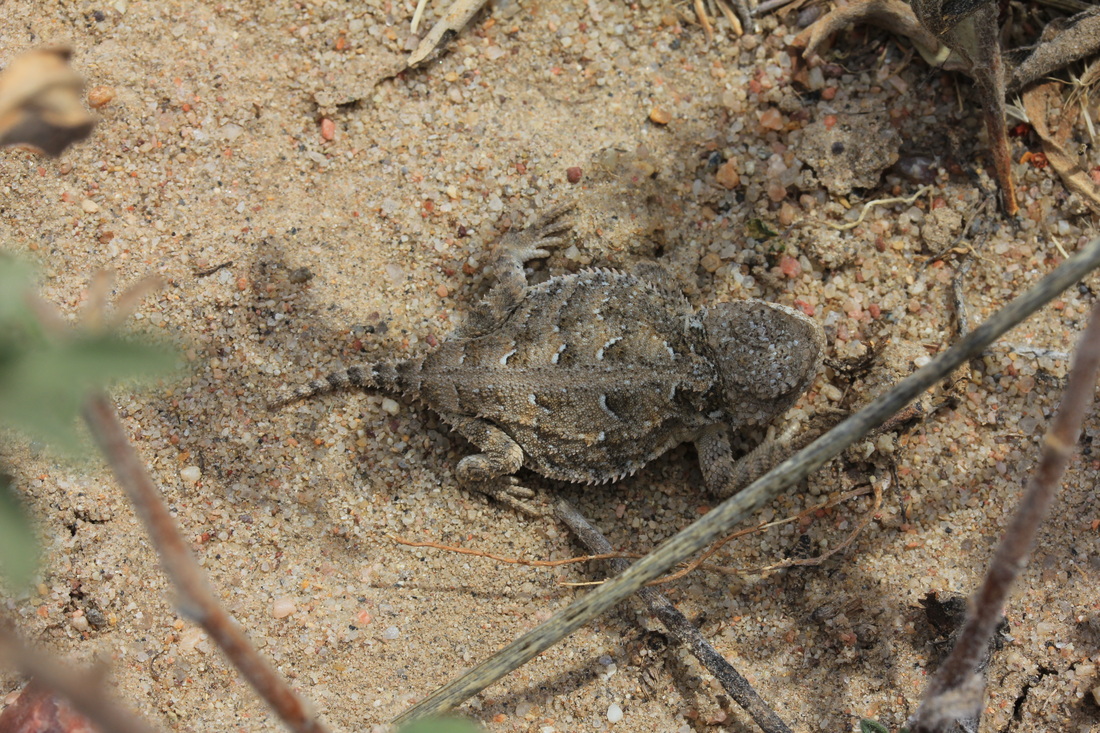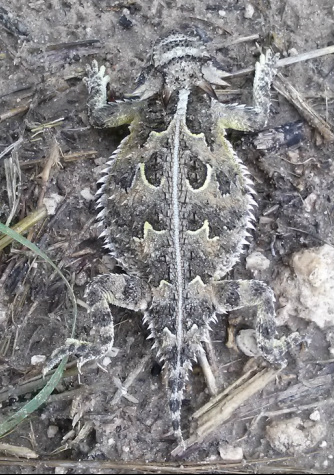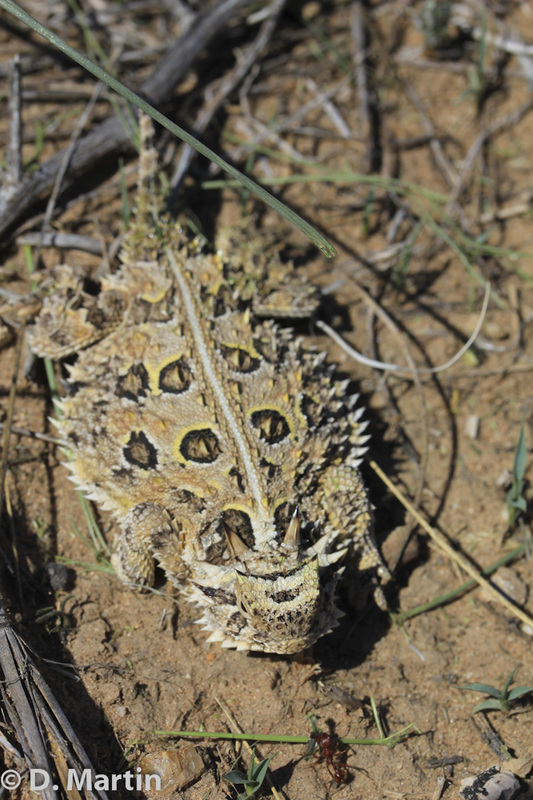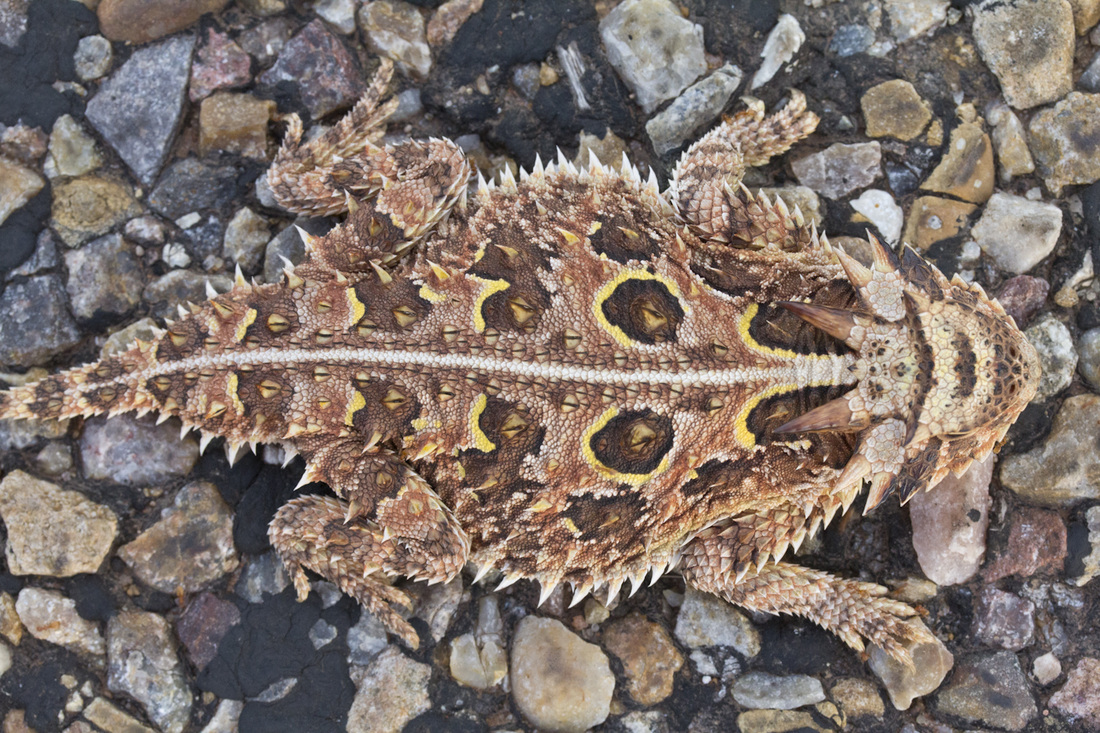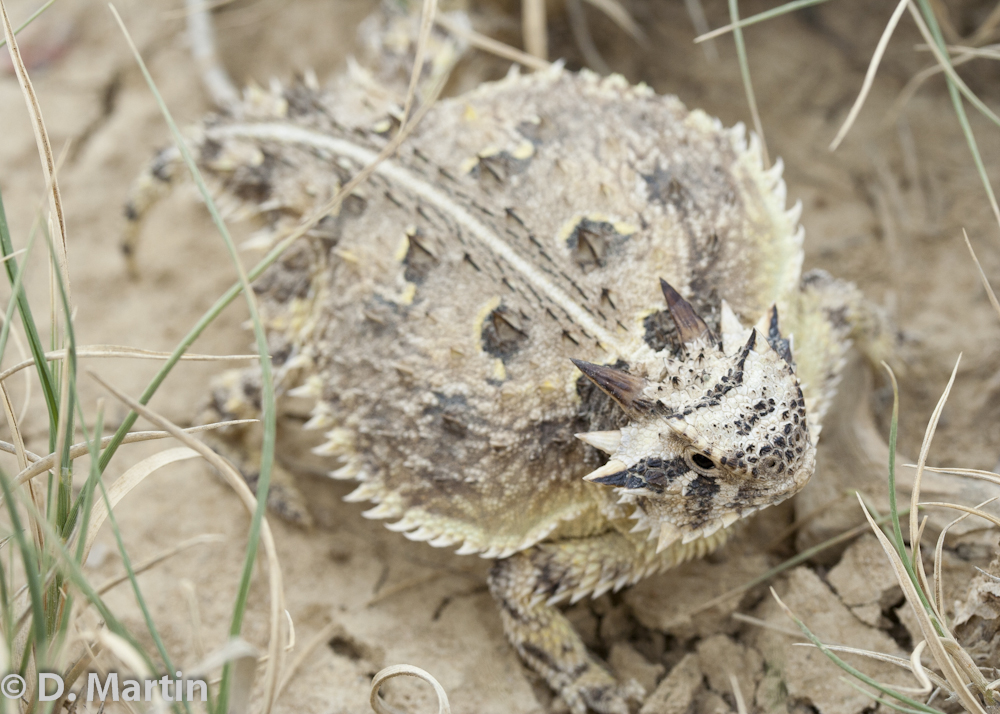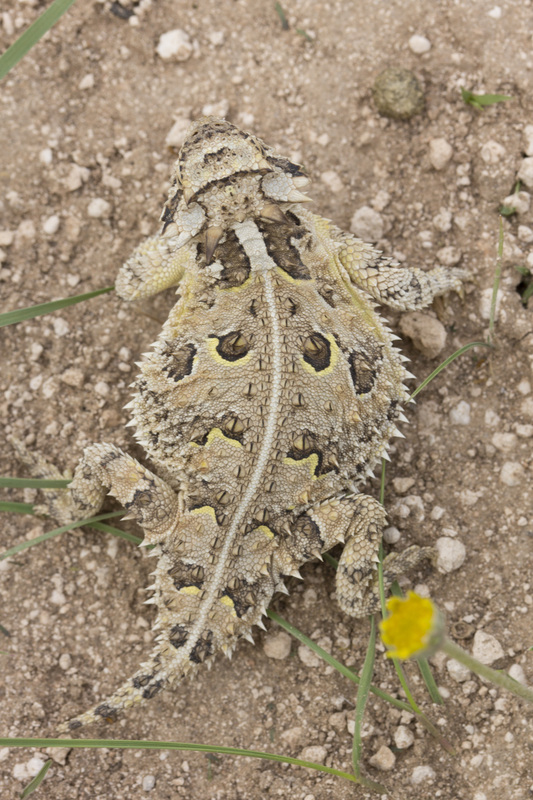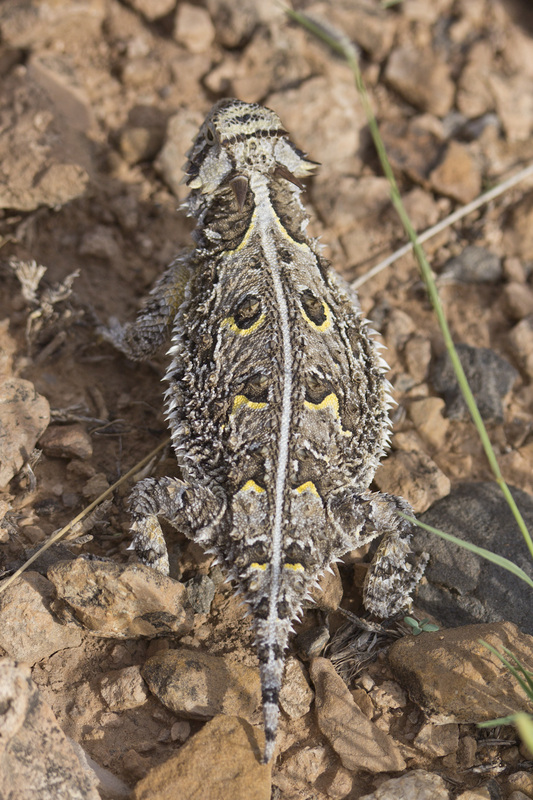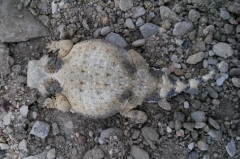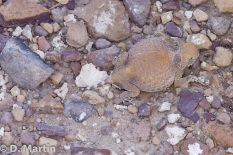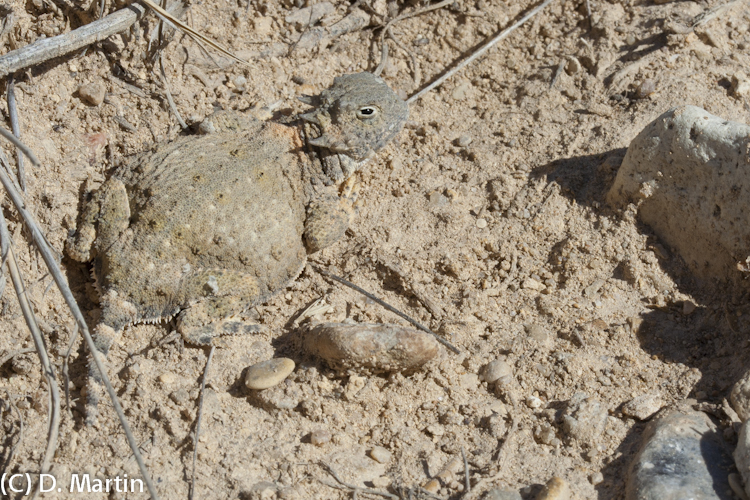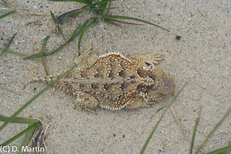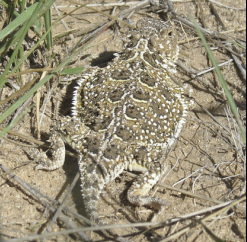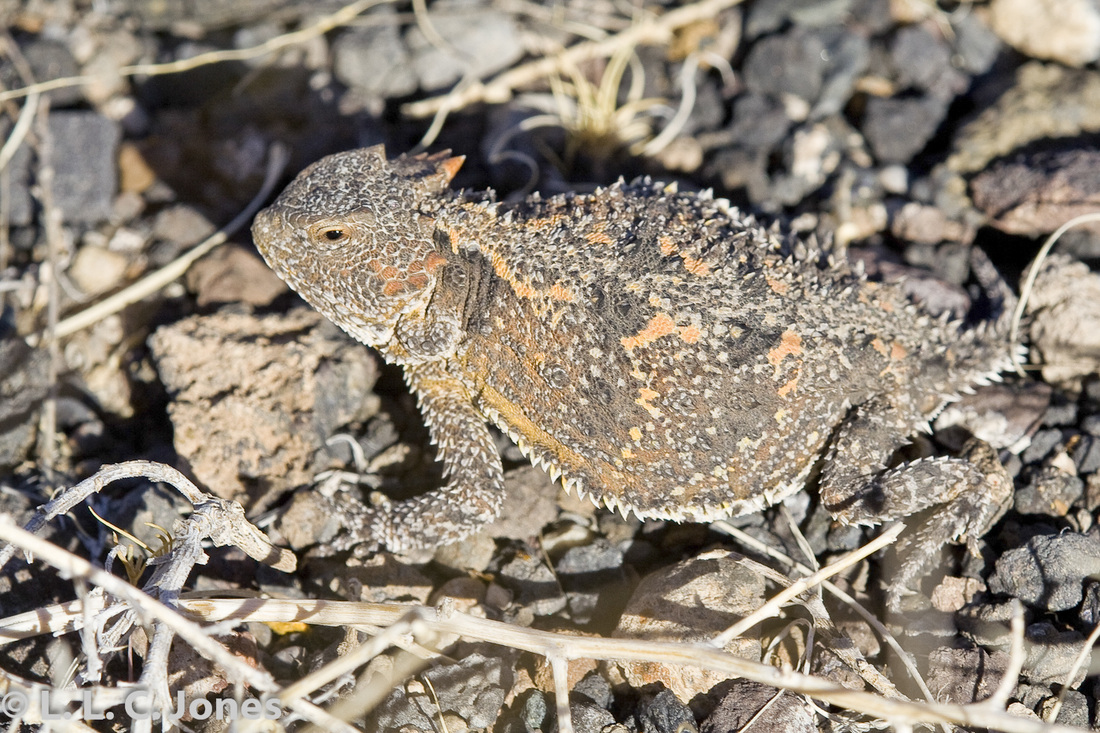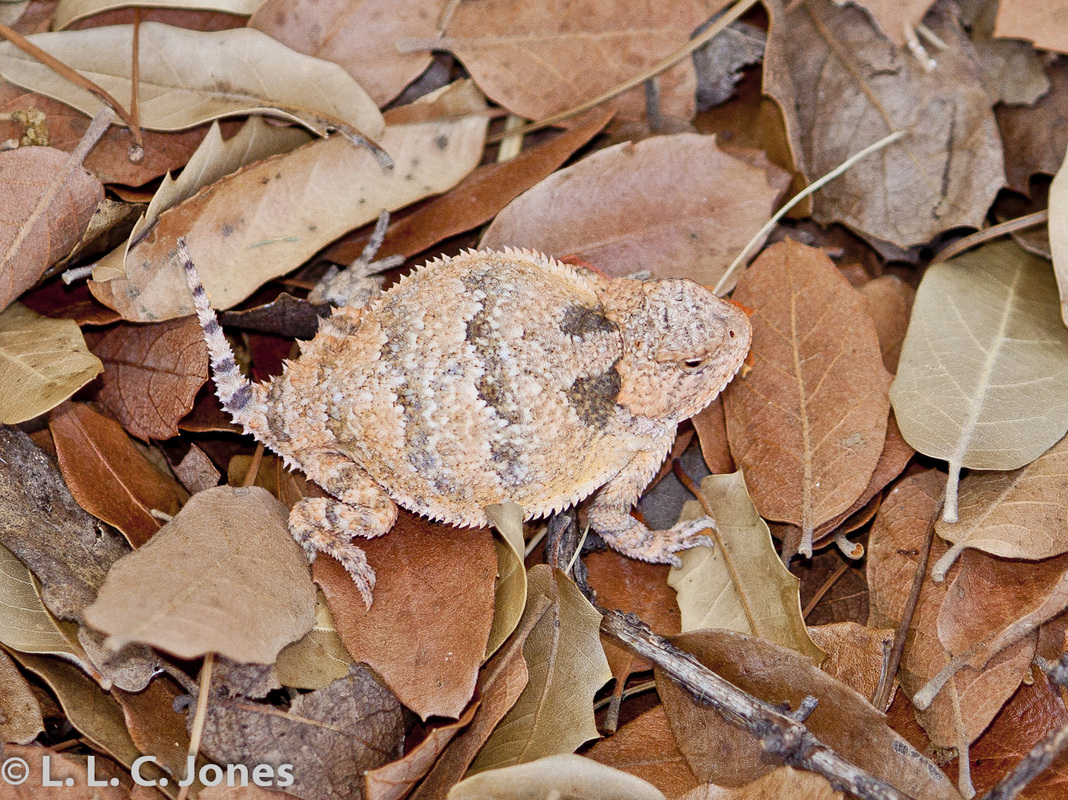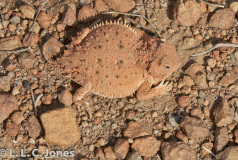Reptile Monitoring - Photo ID Project
|
Horned Lizards - Phrynosoma spp.
Round-tailed Horned Lizards typically match the general color of the soil or rocks where they are found. Individuals vary in coloration, often by site. E.G., The individuals upper left, upper right were found in southwestern Texas at the same site; the individual in lower right was found further south in Texas, and the individual lower left was found in southeastern Colorado.
|
Ornate Box Turtle - Terrapene ornata
An adult male Ornate Box Turtle (above) observed in southeastern Colorado. Males can be distinguished from females by eye color - males have red eyes, while females have yellow or brown eyes.
*Note that the photos displayed above and to the left would not be particularly useful for photo ID: ideally these photos would have been taken at a bit higher angle (directly above the animals) if possible, or from above behind the animals, to show the complete dorsal (back) pattern.
For more photo tips click here!
|
Why Photo ID?One of the best tools wildlife managers have to ensure conservation of wildlife species is to survey populations using standardized methods - this enables estimating both the current population abundance. Even more useful are surveys over time and space to enable natural resource mangers to estimate trends in populations relative to variation in their environment. For example, surveying a lizard population at a given site over 10 years would allow for investigation of how that population changes over time relative to environmental changes such as annual climate, habitat features, disturbances, disease, etc...
Many population monitoring methods require unique marks of individuals (i.e., "mark-recapture"). A critical assumption of these methods is that the marking method does not influence the behavior or survival of individuals marked - I.E., those marked in the population represent the total population in the area of interest. In the past, reptiles have been marked using invasive methods such as toe-clipping, injection of Passive Integrated Transponder (PIT) tags, radio transmitters, web tags, painting, scale clipping, scute-notching, and branding. While many of these methods have been demonstrated to not effect behavior or survival in some reptile species, there are far too many species for which this assumption has not been studied. If this assumption is violated, population estimates can be biased and may not be reasonable or defensible. One way to get around this critical issue is to avoid using invasive techniques to mark animals! |
Ideal photos of Short-horned Lizards observed in Colorado. Note the entire dorsum (back) is in focus and you can clearly see the pattern. The photos were taken from nearly directly above the lizard, and it was in the shade of the observer's body (above) or vegetation (below) so as to reduce glare from the sun and improve natural contrast in the patterns.
|
Using individually-unique markings/patterns/morphology to distinguish individuals has long been used by researchers studying mammals (e.g., zebras, many wild cat species, polar bears, many whale species), and more recently amphibians (e.g., many salamander species, some frogs and toads). Few prior studies of reptile populations have attempted to use these unique patterns or morphologies as a non-invasive mark for mark-recapture studies. A major benefit of this non-invasive 'capture' method is that marks can be recorded on photographs of reptiles in situ (in their natural environment) during visual encounter surveys or opportunistic encounters, without the need to physically capture or restrain animals.
Ornate Box Turtle photos taken with the intent of identifying individuals based on unique carapace (upper shell) patterns. These turtles were observed by different people between Colorado and Texas in 2013. A few photo tips/notes:
- Keep the animal in the shade of your body if possible (e.g., the first 4 photos from left to right). Turtles in direct sunlight (e.g., last image on right) or when using flash will have bright reflections off the shell, making it more difficult to see patterns/markings necessary for the photo ID method to work well.
- Focus on the center of the back for horned lizards and box turtles. If you are a more advanced photographer, set the aperture to a depth of field adequately small to obtain focus on most of the back, e.g., f/11, given the lighting conditions, and for turtles focus ~1/4 down the slope of the carapace.
|
An adult female Texas Horned Lizard as found during a survey at Caprock Canyon State Park, Texas. This photo was taken with a cell phone camera by D. Martin in August 2013. Note that the lizard fills much of the frame, is in the shade to reduce sharp lighting contrast, and the entire dorsum (back) is in focus. This is an ideal shot for use in photo identification.
|
Citizen-science projects are becoming increasingly popular for gaining information about the distributions of wildlife and their phenology (timing or seasonality of behavior or occurrence). Many of these projects do not use a standardized sampling frame or survey methods - this can lead to limited usefulness of data collected because there are not good analytical methods to analyze haphazard observation data and retain good inference to the population(s) of interest. As part of the Great Plains Reptile Monitoring Project, we are collecting data from both standardized surveys and haphazard/opportunistic survey efforts that will enable a formal comparison of these methods.
For this and other wildlife survey efforts conducted by citizen scientists, it is often illegal and unnecessary (and potentially harmful) to capture or handle wildlife species of interest. The use of voucher photographs taken during standardized survey efforts or opportunistic encounters can provide a way for citizen scientists to contribute without unnecessarily handling wildlife! The most useful contributions will come from sites that are revisited over time, since sites of opportunistic/haphazard encounters with individuals may not be revisited. If sites are not revisited regularly there is little opportunity for 'recapture'. However, given our objectives here to assess the regional variation in patterns and morphologies of horned lizards and box turtles, we are accepting photographs from opportunistic encounters in addition to those from standardized survey efforts. |
Here, we have selected a several species characterized by markings or morphologies that are likely individually-unique so that we can investigate the possibility of using photographs as a non-invasive 'mark'. These are also species that are relatively 'slow' and a bit easier to approach closely for photographs without having to capture them! This pilot study will assess the natural variation in markings/morphologies of horned lizards (Phrynosoma spp.) and Ornate Box Turtles (Terrapene ornata) across the landscape - and not just in the Great Plains.
A few more examples:
|
Texas Horned Lizards
Dallam County, Texas
Cottle County, Texas
Otero County, Colorado
|
Randall County, Texas
Cimarron County, Oklahoma
|
Round-tailed Horned Lizards
Otero County, Colorado
Las Animas County, Colorado
Otero County, Colorado
|
Short-horned Lizards
Weld County, Colorado
New Mexico (C. Bycenski photo)
Coconino County, Arizona
(Larry Jones photo) Arizona (Larry Jones photo)
Arizona (Larry Jones photo)
|
Those participating in the Photo ID Project are encouraged to use the smartphone app - Mark the "Smart phone App" option below!

